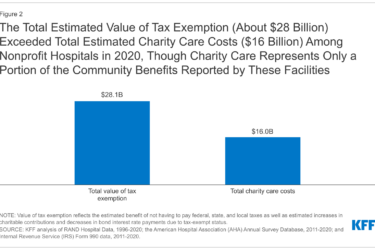Rising health insurance premium rates have cost families with workplace coverage more than $125,000 in earnings over three recent decades, according to a study in JAMA Network Open.
In an article published Jan. 16, 2024, “Employer-Sponsored Health Insurance Premium Cost Growth and Its Association With Earnings Inequality Among US Families,” researchers Kurt Hager; Ezekiel Emanuel, M.D.; and Dariush Mozaffarian, M.D., explained that employers typically pay most of the cost of health insurance premiums but as those costs rise, employers require workers to pay more for their health insurance benefits.
The study shows that rising premiums are costing workers through lost pay raises they could have received otherwise, as Caitlin Owens reported for Axios.
An important feature of the study is that the rising cost of health insurance premiums affects low-income workers and people of color more than it affects high earners, the JAMA Network Open researchers explained.
Among families with employer-sponsored health insurance, the mean cumulative lost earnings from 1988 to 2019 associated with growth in health insurance premiums was $125,340 per family in 2019 dollars, the researchers wrote. That amount is nearly 5% of total earnings over those same 32 years, they added.
“In all 32 years of the study, health care premiums as a percentage of compensation were significantly higher for non-Hispanic Black and Hispanic families than for non-Hispanic White families,” they wrote.
“Our results depict the hidden costs of increasing health insurance premiums for the U.S. worker: less opportunity for wage growth and a heavier burden of health insurance premiums on lower-paid workers and on Black and Hispanic workers,” they added.
An increasing burden over time
Over many years, increases in premium rates have outpaced wage growth, meaning families’ payments for health insurance have become a larger part of total compensation as employers pay more for health benefits and ask families to pay more as well, as Owens noted.
“Premiums usually don’t vary based on income level, making them a larger percentage of total compensation for low-income workers — who are disproportionately people of color — than those with higher incomes,” Owens added.
Almost every year, health insurers charge employers more as hospitals, physicians and other providers charge more as well. In 2023, the average workplace health plan cost almost $24,000 for family coverage, according to the 2023 benchmark KFF Employer Health Benefits Survey. That survey showed that employers and families paid a combined average of $23,968 last year for employer-sponsored insurance. Of that amount, employers paid $17,393 (almost 73%) and families paid $6,575 (27%).
In addition to paying for health insurance premiums, all consumers have to pay out of pocket for costs that insurance does not cover. These costs include deductibles, copayments and coinsurance.
In 2022, the most recent year for which these data are available, consumers paid $471.4 billion in out-of-pocket costs, accounting for 11% of all U.S. health care spending, according to a fact sheet, “National Health Expenditures 2022 Highlights,” from the federal Centers for Medicare and Medicaid Services. The $471.4 billion represented an increase of 6.6% in 2022 over what consumers spent








